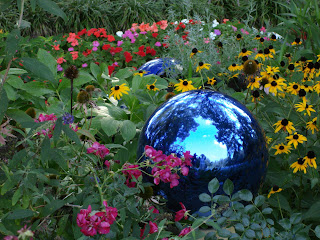 |
| Focal point |
 |
| Savannah Front entrance |
The other very important issues to consider will be the amount of natural light available, and the size constraints you will have.
Six hours of nautural sunlight is considered to be a sunny location. Less than that can use plants that are o-k in sun/shade locations. You will also want to consider if the sun is morning or afternoon, as afternoon sun is more intense. Also, will it be reflecting off a wall?
Do you want your garden to be formal or casual?
A home with formal lines, and a central front entrance calls for a formal layout in the front with the planting being symetrical to follow the lines of the house. If it is a 2 story house, you will need to add some height to balance it out. Larger trees planted out from the corner of the house will balance the height and offer the opportunity to add lower beds directly in front of the house and keep everything in scale.
If you live in a smaller home or condo, you may do most of your planting in oversize pots to bring color and personality to your space. DO NOT use a cluster of small pots, as they dry out too quickly and look messy!
Always consider the natural surrounding in your landscape. You can 'borrow' site lines from your neighbors yards or a natural area, and these will give you a start for the type of garden you will plant for it to look cohesive in the neighborhood.
 |
| What is beyond that back gate? |
Good luck with the plans, and next we will discuss some plant choices.
Email me with any questions you may have: donna@donnacomstockinteriors.com
HAPPY SPRING GARDENING!

